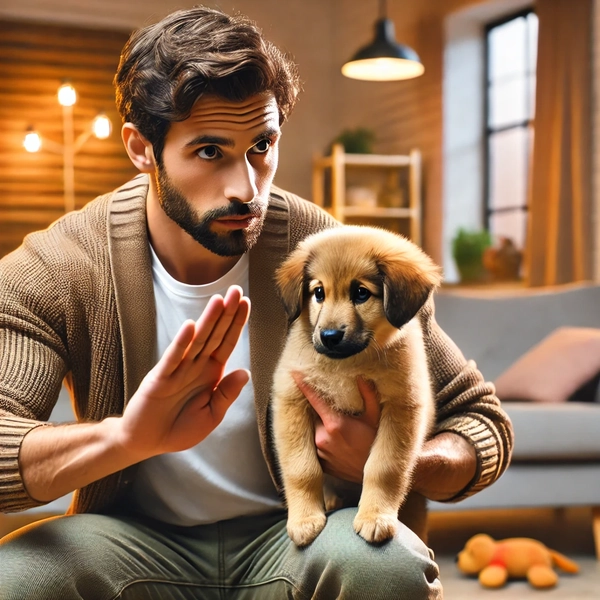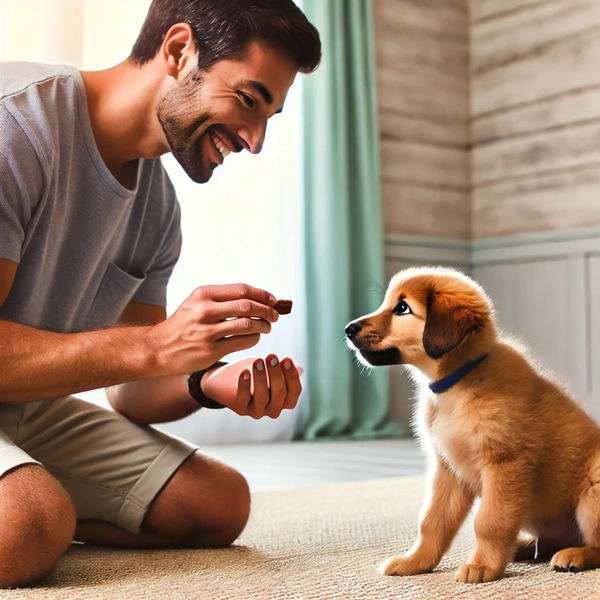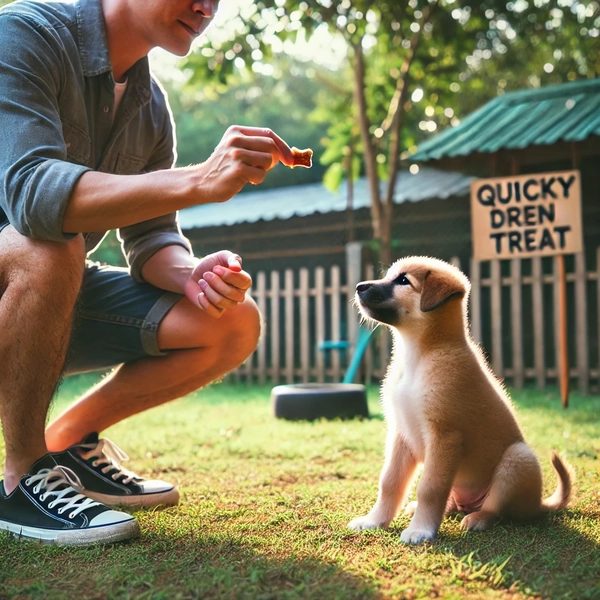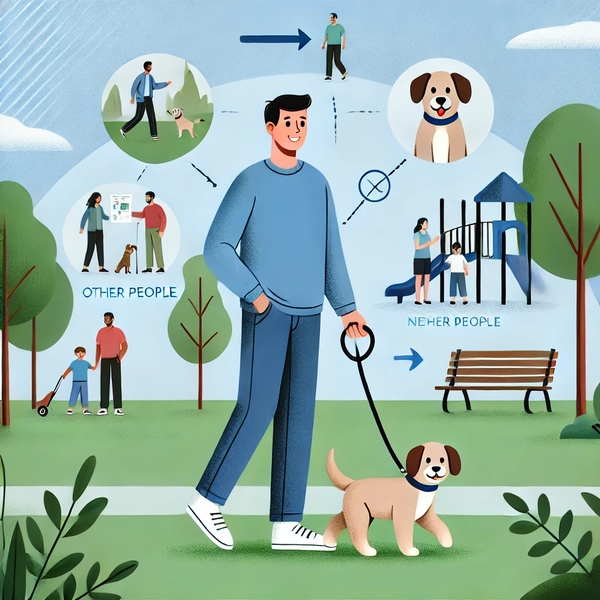Puppy training mistakes: Dog training, especially with a puppy, is a beautiful undertaking. Nonetheless, it has its fair share of difficulties. Even the most motivated dog owner can only prevent some errors that may hinder the training process.
Knowing such mistakes allows a trainer to improve and become a worthy pet parent. Let’s break down 24 common puppy training mistakes and their solutions so that we can ensure the well-being of our puppies!
24 Common Puppy Training Mistakes
Here are 24 Common Puppy Training Mistakes and how to avoid
1. Overdoing Training Duration

Training sessions are essential, but it is worthwhile to appreciate the potential limits of your puppy. Puppies tend to maintain their attention focus for a very short period, so training sessions that are too long are likely to tire them.
- Mistake: It is important to note that training sessions should not be extended beyond what your puppy can attend.
- Why It’s a Problem: Puppies’ attention may wane, causing either boredom or distraction, which can render the training session unproductive and very annoying for you both.
- How To Avoid It: The sessions should be brief, 5-10 minutes at a time, and interesting to the students. Remember that many such short sessions give better results than one long session. A few training sessions should be interspersed throughout the day.
2. Reinforcing Incorrect Responses

Unwanted behavior can quickly be rewarded by accident if caution is not taken. For instance, if you pay attention to a puppy when it barks, it learns that barking is a great way to get attention.
- Mistake: With increasing, tolerating or even petting an otherwise unwanted behavior.
- Why It’s a Problem: Your puppy realises that salacious deeds will get them what it is, so they do it again.
- How To Avoid It: Respond to favorable actions. Instead, praise the puppy for performing the desired behavior, such as remaining quiet or sitting still.
3. Overlooking Positive Reinforcement

One key strategy in puppy training is positive reinforcement. This encourages good behavior in puppies by using rewards such as treats or praise. Missing this may impede their progress.
- Mistake: Failing to give positive reinforcement such as praise or treats in response to command obedience.
- Why This is a Problem: Without understanding the cause of that effect, their “desirable” behavior may also be defined as “non-desirable,” and they will get puzzled.
- How To Avoid It: Always remember to give a treat and praise for the desired behavior after it is exhibited without delay.
4. Obtaining an Incorrect Crate

Crate training helps ensure a puppy is secure even in its owners’ absence; however, the correct puppy should be selected. Getting an extra-large or extra-small one can result in stress and discomfort.
- Mistake: Provisions of a crate that is either too small or too big for the puppy.
- Why It’s a Problem: An overly large crate may cause discomfort and lead to anxiety, so the puppy may not consider it a den or a safe place.
- How to Avoid It: Get a crate big enough for the puppy to stand, turn around, and lie down but not so big that it leaves space, which may be intimidating.
5. Pampering Your Puppy Too Late

When dog training is concerned, the first command on the list always involves correct and fast treat delivery. If you take a long time to reward your puppy for carrying out a command, your puppy may associate carrying out the command with something other than receiving a treat.
- Mistake: Reaching out for the tasty reward a bit longer after performing the desired behavior.
- Why It’s a Problem: Prolonged pauses can confuse your puppy, making it unclear which behavior earned the treat.
- How To Avoid It: Treats should be given immediately after the puppy carries out the command to bridge the gap between the action and the reward.
6. Not Exposing Your Puppy Enough

To become adequately developed, a puppy must be exposed to various sights, sounds, and activities. Keeping them inside can always result in a fear of new situations when they grow older.
- Mistake: Not allowing your puppy to experience different surroundings and situations.
- Why It’s a Problem: Puppies deprived of various stimuli may grow up with fears and avoid new things as adults.
- How To Avoid It: Expose your puppy to various people, places, and sounds but in a slow, controlled, and positive way.
7. Lack of Socialization
It is essential to socialize your puppy. To learn to act a certain way, puppies must interact with other children, adult dogs, humans, and other animals. You must complete this step to avoid problems with their behavior.
- Mistake: We need to socialise the puppy correctly.
- Why It’s a Problem: Unsocialized puppies may grow aggressive and even excessively shy, depending on the situation, and will find new situations hard to cope with.
- How To Avoid It: Help them acquire socialization skills by regularly doing socialization exercises, such as attending puppy classes, going to parks, and arranging play dates.
8. Tolerance of Unwanted Behavior
Pet owners sometimes become complacent and allow unwanted behaviors such as barking, jumping and whining. However, these behaviors must be curbed because a dog paid attention to during such acts will engage in them endlessly.
- Mistake: Encouraging unwanted behaviors without the intention of doing so.
- Why It’s a Problem: Puppies understand quickly that some behaviors will result in attention, even if they may be harmful.
- How To Avoid It: Try to Avoid or Distract the Unwanted Behavior. For instance, avoid looking at your dog when he jumps on you and only pay attention to him when he is quiet.
9. Pets Do not Socialize
Socialization includes getting your puppy used to other dogs; it means it is not all. Puppies should also learn to love different people, animals, and places.
- Mistake: Allowing a pup socialization with only a few individuals or places.
- Danger: This restricts their scope and may make them timid when encountering something out of their experience.
- How to Avoid It: To bolster your puppy’s confidence, take it to parks, pet shops, and other neighbourhoods.
10. Not Training Enough
Training isn’t a singular act where you train the puppy and expect him to remember everything. It takes time for the puppy to comprehend and obey commands, which involve repetition.
- Mistake: Training, i.e., say and advocate skipping days or inconsistent training.
- Why it is a Problem: They may need reinforcement to remember this and perform it each time they like to.
- How to Avoid It: Daily training on a command to help remind them of the lessons and commands.
11. Repeating Commands
Commands such as ‘sit, sit, and sit—’ can disturb your puppy. They may believe they should hold on for several repetitions before acting.
- Mistake: Commanding someone more than once while the first request has yet to receive a response.
- Why it is a Problem: It creates circumstances where the puppy waits for the command to be said twice or thrice, leading to slow learning.
- How To Avoid It: Say the command once and allow the puppy to react. If he does not respond, wait a while and repeat the action.
12. Getting Too Much Into The Motion
While your pup is training, factors such as tone of voice and body language issues come into play. If you are happy, overly happy, or even too harsh, that alters the factors affecting the dog positively or negatively.
- Mistake: Uttering words with an exaggerated tone or letting out a feeling of frustration while training the puppy.
- The Problem With This Is that understanding and alerting a puppy to your emotional disposition may be challenging, as it is not the exercise at hand.
- How To Avoid It: Maintain a calm, steady tone even when confident, as there is no need to overload the puppy.
13. Cue Nagging
Repetitive incapacitation does not promote learning. Instead, it lets the puppy know it can take time to respond.
- Mistake: Every few seconds, issuing commands such as sit and not allowing time for the puppy to respond.
- Why it’s a Problem: This makes the puppy ignore the first cue and wait till he gets several.
- How to Avoid It: Give the cue one time, be patient until they respond, and reward them once they do.
14. Expecting Results Too Early
Puppy training is a painstaking process. However, it is common for new dog parents to want results straight away. This disappointment comes when the puppy is quicker to grasp the lessons than hoped.
- Mistake: Losing one’s remarkable and presuming the puppy will learn then.
- Why It’s a Problem: Training does not happen instantly, and expecting too much too fast can be detrimental to both of you.
- How To Avoid It: Laugh at little victories and take your time. There is also the need for repetition or practice before puppies appreciate commands fully.
15. Anticipating the needs of the young canine.
Pet owners often forget that puppies are not ready to communicate their feelings or needs. For instance, they do not know how to signal when they want to go out. Thus, they may have accidents caused by their owners’ unrealistic expectations.
- Mistake: Believing your puppy can tell you when it needs something.
- Why It’s a Problem: Puppies are trained to behave appropriately after being on a specific schedule and routine.
- How To Avoid It: Create and implement specific daily routines that incorporate potting, feeding, and playing so your puppy knows what is required.
16. Concealing the Canine Cage
Every dog owner should remember that the cage is not ‘the last resort’ in keeping their puppy, nor is it an item to be concealed away in a corner.
- Mistake: Using the cage as a means of punishment by porting it to a corner or using it rarely.
- Why It’s a Problem: This creates an impression that it is an object of punishment rather than a comfortable place for the puppy.
- How To Avoid It: Use the crate to create a safer space for the puppy, out of reach of children or other pets, and place it in an open and welcoming space.
17. Unwillingness to Practice What You Preach
Puppies enjoy and do well when they are made to follow the same thing. If this happens on different days, it will be destructive for them as they may not know what is right and wrong.
- Mistake: One day allowing for certain behaviors and another day reprimanding for those same behaviors.
- Why It’s a Problem: Mixed rules hinder your puppy’s ability to learn and obey orders comfortably.
- How To Avoid It: Create specific rules and make sure all of them are followed every day.
18. Allowing Your Puppy To Move About The House Alone
When given too much freedom, puppies tend to get into mischief or form undesirable behavior patterns. Restraints and monitoring of their activities, particularly young ones, are advised.
- Mistake: Puppy raising in households where each apartment enclosure is freely accessible should be avoided.
- Why It’s a Problem: Lack of monitoring of pets may be associated with risk of injury, chewing furniture, or other undesired behaviors.
- How To Avoid It: Provide constant supervision or restrict their area by fitting baby gates or playpens until they know how to behave.
19. Lack Of Imitation Lovely Attunement
While some puppies may learn differently than others, not every dog can handle a rigidly imposed training schedule.
- Mistake: All puppies are trained the same way regardless of their characteristics.
- Why It’s a Problem: The method employed might be unsuitable for their temperament, and that could impair their learning.
- How To Avoid It: Change how you handle the pup concerning the changes in behavioral aspects and the response tendency of the puppy.
20. Cue Reinforcement
Incorrect reinforcement of cues can lead your puppy to believe that it is expected to defy you or that it is natural to wait for numerous cues before responding.
- Mistake: One repeats a command when one does not immediately observe any reaction from the puppy.
- What Is The Problem With It: This encourages the puppy to determine the period over which action is activated, waiting for a second and third signal.
- How To Avoid It: Send the command once, wait, then give the command again if there is no response.
21. Yelling At Your Puppy Long After The Event Is Over
Yelling at a puppy because of messy accidents or unpleasant acts is senseless. The puppy lacks understanding of what it has done wrong.
- Mistake: Yelling at the puppy after discovering a messy accident or when it finds a chewed object.
- Why It’s a Problem: Puppies’ brains are incapable of linking the punishment with the behavior that happened prior.
- How To Avoid It: Concentrate on immediate redirection and positive reinforcement when we catch them in the act.
22. Too Much Freedom
Allowing your puppy too much freedom, especially when young, can provoke chewing and potty-related accidents.
- Mistake: Giving untrained puppy complete access.
- Why It’s a Problem: Puppies tend to cross unfixed barriers, which makes it hard for them to learn proper behavior.
- How To Avoid It: Extend their limits progressively, as learning and proving they can abide by the house rules.
23. Training Inconsistently
Training in an inconsistent manner makes puppies uncomfortable, leading them to learn very few, even command cues.
- Mistake: Avoiding training sessions and training within a given regime inconsistently.
- Why It’s a Problem: Lack of regular training contributes to near-stagnated training rates and uncertainty.
- How To Avoid It: Implement a daily training plan to enhance retention of skills learned.
24. Potty Pads and their Usage
Potty pads can be helpful; however, they may confuse your puppy about the right place to relieve himself.
- Mistake: Plan for outdoor potty training and still depend on the pads.
- Why Is It a Problem: Puppies must realise they must move from pads to out.
- How to Avoid It: Use the outdoors immediately for toilet training, and encourage the habit of going outdoors in the earliest stages of training.
In Conclusion, If you learn and avoid the following 24 training mistakes with your puppy, you and your puppy are destined for greatness. Training involves working hard and being consistent, but it doesn’t have to be complicated; it can also be fun for the two of you!